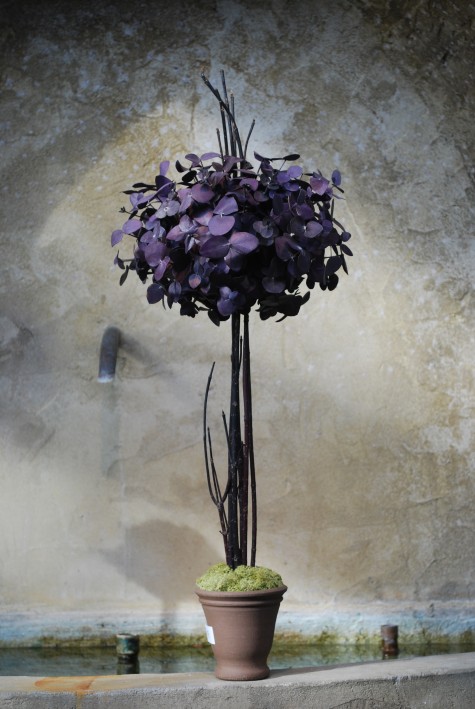The most amusing event of my week? Bunches of pussy willows, fully decked out in their silvery fur, arriving via UPS. Maybe it doesn’t take so much to amuse me, but was there not a time when every yard had a gangly overgrown and not so gorgeous salix whose main claim to fame was how they woke up and got going in March-the early fur bird of the garden? Just about to burst, we all cut branches and brought them inside, as it was still way too cold to stand outside and appreciate this modest but sure sign of spring. Pussy willow delivered to my door-what has the world come to?
 Like its shrubby partner in crime, forsythia, early counts for a lot in my zone. Some gardeners with foresight may have galanthus or eranthis popping out of the ground. Or a hamamelis in bloom. Other warm and urban southern facing walls may be softened by daffoldil leaves springing forth, announcing the imminent change of the season. But pussy willow holding forth is a sure harbinger of spring.
Like its shrubby partner in crime, forsythia, early counts for a lot in my zone. Some gardeners with foresight may have galanthus or eranthis popping out of the ground. Or a hamamelis in bloom. Other warm and urban southern facing walls may be softened by daffoldil leaves springing forth, announcing the imminent change of the season. But pussy willow holding forth is a sure harbinger of spring. 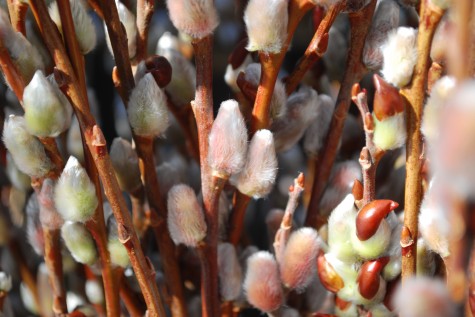 Do you think you would still love pussy willow branches if they came on in June or July? Sure this is a rhetorical question; timing is everything, yes? In a past life when I had five acres of land, only two of which were even remotely civilized, I could wade in those wild places and be sure to find pussy willow, forsythia, and rosa multiflora making moves in March. I could see the sap was rising in the willows; the branches are waking up. The color was distinctly different-luminous, and alive.
Do you think you would still love pussy willow branches if they came on in June or July? Sure this is a rhetorical question; timing is everything, yes? In a past life when I had five acres of land, only two of which were even remotely civilized, I could wade in those wild places and be sure to find pussy willow, forsythia, and rosa multiflora making moves in March. I could see the sap was rising in the willows; the branches are waking up. The color was distinctly different-luminous, and alive.
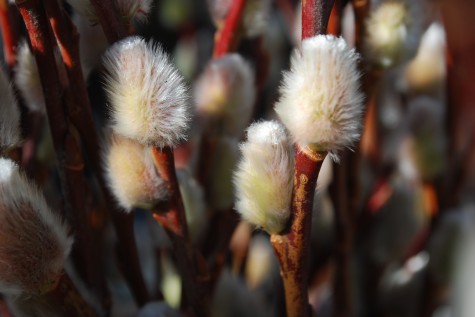 The poplars, whose rustling leaves stage a concert most every summer day, are all branches and trunks in March. But there will come a time when that grey bark is suffused with with a green welling up from underneath. There are no stands of popples where I live now. Should I decide to plant a meadow of popples, pussy willow, forsythia, wild roses, bergamot, buffalo grass, centaurea, and willow in the right of way on my urban corner lot, I most likely would be facing some highly irate neighbors.
The poplars, whose rustling leaves stage a concert most every summer day, are all branches and trunks in March. But there will come a time when that grey bark is suffused with with a green welling up from underneath. There are no stands of popples where I live now. Should I decide to plant a meadow of popples, pussy willow, forsythia, wild roses, bergamot, buffalo grass, centaurea, and willow in the right of way on my urban corner lot, I most likely would be facing some highly irate neighbors.
Not everyone shares my idea of beautiful. Why should they? So I’ll keep the lawn in the tree row, for now. I have another source of spring from which to draw. My twigman has made a life of growing specific cultivars whose twigs make the faces of gardeners light up. This salix, which he calls prairie willow, I have never seen before. When I unwrap his long sturdy stems, I am delighted, relieved, beyond all belief. His pussy willow branches are studded with furry buds, one right after another.
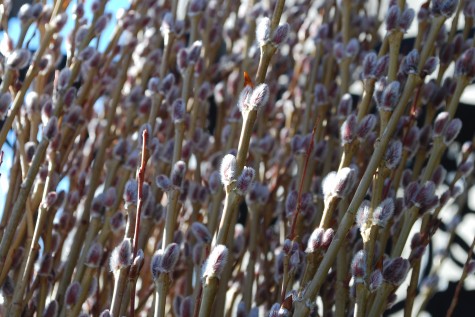 Do I long for my wild pussy willows-not really. I never pruned them properly. The stems had missing teeth-inevitably. They grew at angles impossible to right. Though I have no end of nostalgia for what enchanted me 30 years ago, I am perfectly happy what came my way today. Living and breathing-spring is on its way.
Do I long for my wild pussy willows-not really. I never pruned them properly. The stems had missing teeth-inevitably. They grew at angles impossible to right. Though I have no end of nostalgia for what enchanted me 30 years ago, I am perfectly happy what came my way today. Living and breathing-spring is on its way.
 The first harbingers of spring in Michigan-they have a big job. We gardeners are starved for sun, life, movement. We are most interested in winter loosening its grip. There are signs from nature that will help that big ache you have. Mine came in the mail today.
The first harbingers of spring in Michigan-they have a big job. We gardeners are starved for sun, life, movement. We are most interested in winter loosening its grip. There are signs from nature that will help that big ache you have. Mine came in the mail today.
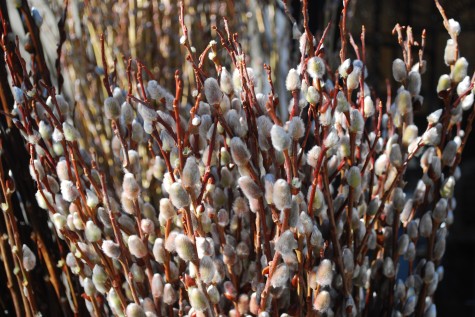
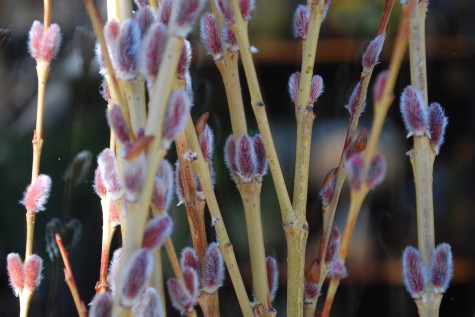
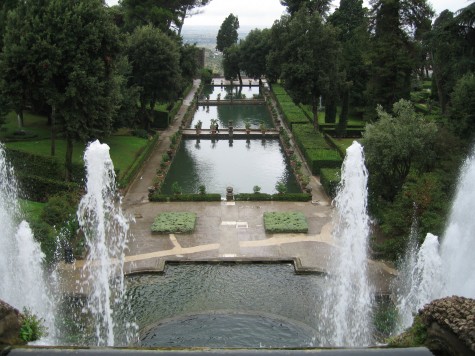
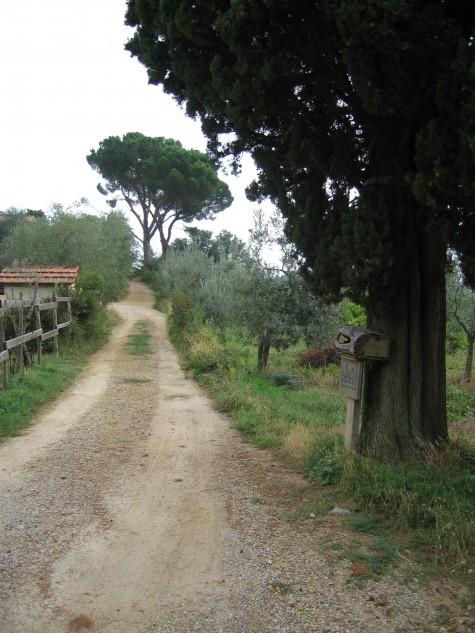
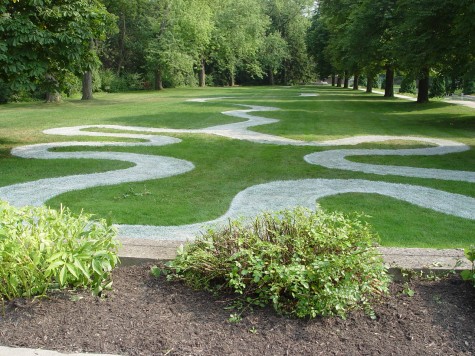
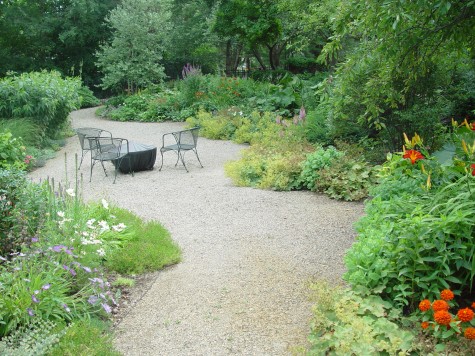
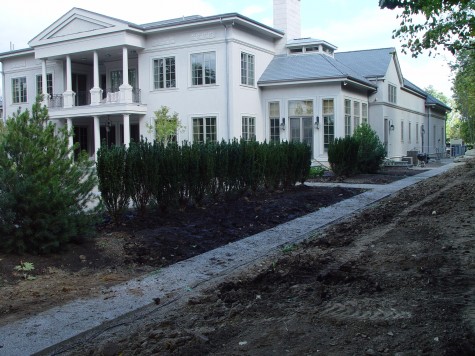

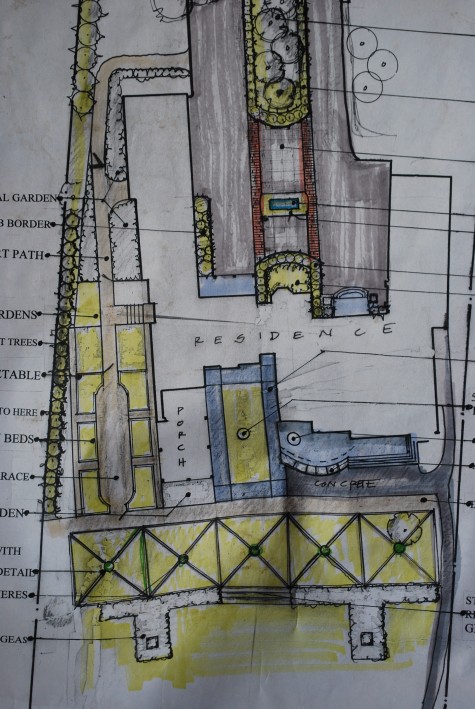
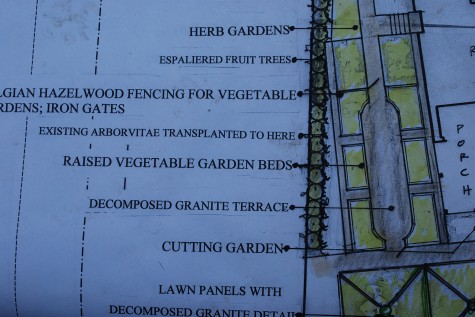
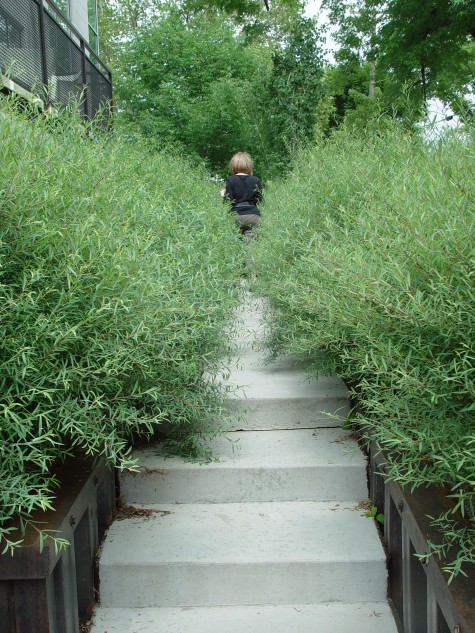

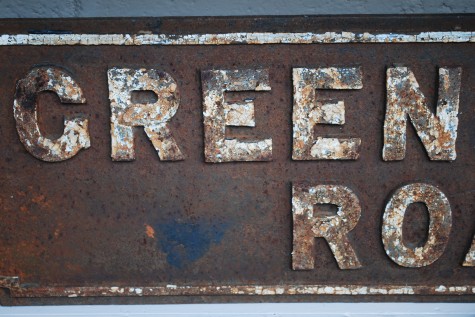
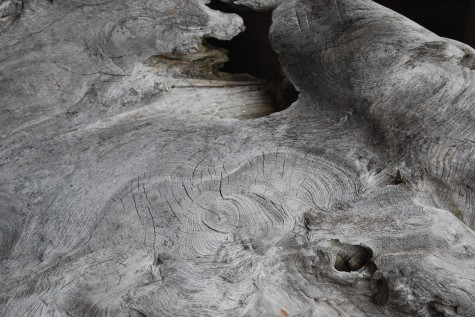
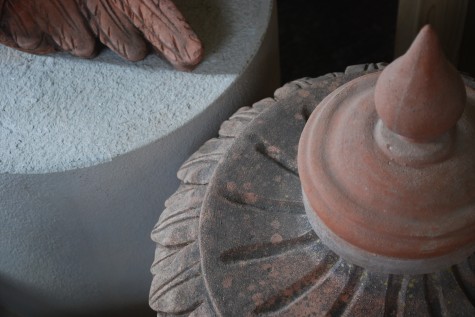
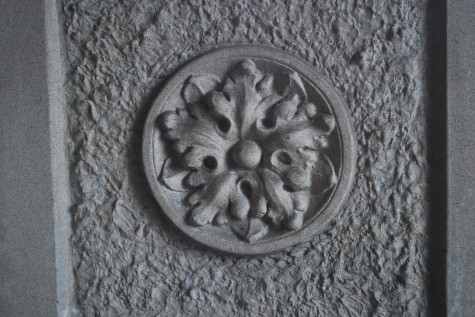 Pictured above is a panel of a terra cotta square pot made by the Galloway Company from Philadelphia Pennsylvania in the early 20th century. The river bottom clay from whence their pots were made is naturally this color. There is no mistaking this is a natural material, even if you have never seen anything made from cream colored clay. The surface is genuine; it rings right.
Pictured above is a panel of a terra cotta square pot made by the Galloway Company from Philadelphia Pennsylvania in the early 20th century. The river bottom clay from whence their pots were made is naturally this color. There is no mistaking this is a natural material, even if you have never seen anything made from cream colored clay. The surface is genuine; it rings right. Do you even have a number in mind for all the different kinds of leaves that must exist? Their surfaces can be hairy, shiny, matte, smooth-there is no end of variation. But what they all have in common are surfaces that are unmistakeably alive. They live and breathe. I could not really explain what it is about a living surface that is so evident. Suffice it to say that I have yet to see an imitation that was truly convincing.
Do you even have a number in mind for all the different kinds of leaves that must exist? Their surfaces can be hairy, shiny, matte, smooth-there is no end of variation. But what they all have in common are surfaces that are unmistakeably alive. They live and breathe. I could not really explain what it is about a living surface that is so evident. Suffice it to say that I have yet to see an imitation that was truly convincing.  Concrete is a man made material which I greatly like. These terra cotta oyster floats have blobs of concrete which help to weigh the floats down in the water. Concrete as a material is at its most beautiful when its surface accurately represents exactly what it is-concrete. Of course everyone has had to make concessions of one kind or another over their garden. I myself have concrete terra cotta pots made in the style of classical Italian terra cotta. I have three places where I wanted a pot in situ 12 months of the year. My concrete pots enable this. Their workmanship is incredibly good. However nothing moves me more than the clay.
Concrete is a man made material which I greatly like. These terra cotta oyster floats have blobs of concrete which help to weigh the floats down in the water. Concrete as a material is at its most beautiful when its surface accurately represents exactly what it is-concrete. Of course everyone has had to make concessions of one kind or another over their garden. I myself have concrete terra cotta pots made in the style of classical Italian terra cotta. I have three places where I wanted a pot in situ 12 months of the year. My concrete pots enable this. Their workmanship is incredibly good. However nothing moves me more than the clay.  Steel and iron are likewise a product of human technology. The surface of steel will age, as it corrodes. The pits in the surface can provide a home for small plants, just like terra cotta. How steel ages can be very beautiful; age on a man made surface greatly enhances its appearance.
Steel and iron are likewise a product of human technology. The surface of steel will age, as it corrodes. The pits in the surface can provide a home for small plants, just like terra cotta. How steel ages can be very beautiful; age on a man made surface greatly enhances its appearance.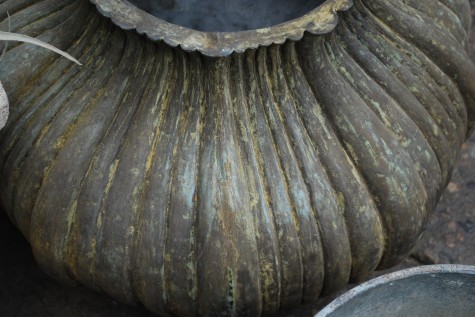 The surface of this terra cotta pot looks like a painting. I have no idea how it was done, but there is no evidence of paint. Whatever altered the surface has soaked in, and become part of the clay. I am told the material is mineral based-as are many pigments.This treatment I can live with. The shape and texture of this pot is beautiful as well-it reminds me of a squash, without trying to look like a squash.
The surface of this terra cotta pot looks like a painting. I have no idea how it was done, but there is no evidence of paint. Whatever altered the surface has soaked in, and become part of the clay. I am told the material is mineral based-as are many pigments.This treatment I can live with. The shape and texture of this pot is beautiful as well-it reminds me of a squash, without trying to look like a squash.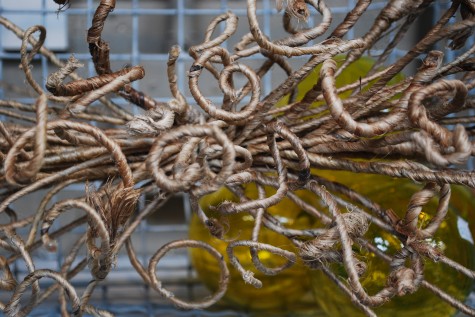

 Eucalyptus is not native or hardy in Michigan, but its sturdy broad leaves remind me of boxwood- super sized, that is. Eucaylptus takes well to being preserved; the lush and lively look pictured above will last a very long time. The delicate cedar whip stems are arranged around a stout stick under a rubber band, and then glued. The trunk has interesting texture, does it not? Preserved reindeer moss covers the top of the clay pot. The moss is set low enough such that the terra cotta pie crust edge can still be seen.
Eucalyptus is not native or hardy in Michigan, but its sturdy broad leaves remind me of boxwood- super sized, that is. Eucaylptus takes well to being preserved; the lush and lively look pictured above will last a very long time. The delicate cedar whip stems are arranged around a stout stick under a rubber band, and then glued. The trunk has interesting texture, does it not? Preserved reindeer moss covers the top of the clay pot. The moss is set low enough such that the terra cotta pie crust edge can still be seen. 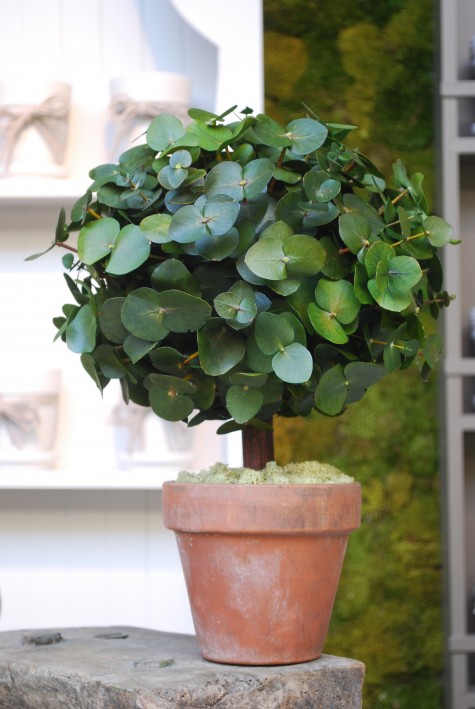 Making anything with one’s own hand is so satisfying. My friends Lauren, Buck, Marianna, Jane, Lynn, Julie and Janet-they cook. Fred’s twice a year chili extravanza-he runs a marathon for a solid two days over it; I have been a lucky recipient. Some sew, others compose. Gerhardt has not only resumed, but embraced his interrupted calling as an artist, after 30 years directing an Art Academy. At 70, he is just firing up. What and how all of them make things energizes me. Myself-I love what these small sculptures teach me about scale, proportion, texture, color, line, mass; what I put together stays with me, when I have a garden project to design.
Making anything with one’s own hand is so satisfying. My friends Lauren, Buck, Marianna, Jane, Lynn, Julie and Janet-they cook. Fred’s twice a year chili extravanza-he runs a marathon for a solid two days over it; I have been a lucky recipient. Some sew, others compose. Gerhardt has not only resumed, but embraced his interrupted calling as an artist, after 30 years directing an Art Academy. At 70, he is just firing up. What and how all of them make things energizes me. Myself-I love what these small sculptures teach me about scale, proportion, texture, color, line, mass; what I put together stays with me, when I have a garden project to design. 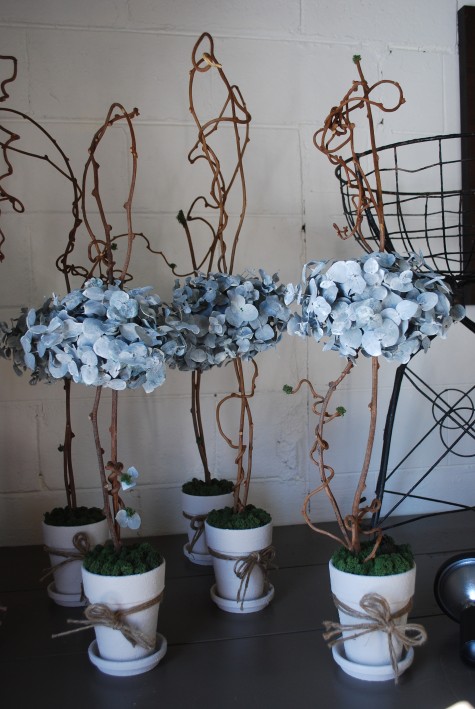 The hard wood of kiwi vine is extraordinarily beautiful. No two lengths are ever the same. Though I designed a number of these small sculptures with whitewashed eucalyptus and painted terra cotta pots, each one is different. As I compare them, I see the importance of line in a composition. I see that a signature, an arrangement of lines, is unique, and significant. Where I might apply this in my work-who knows. But I have seen this, and I will remember.
The hard wood of kiwi vine is extraordinarily beautiful. No two lengths are ever the same. Though I designed a number of these small sculptures with whitewashed eucalyptus and painted terra cotta pots, each one is different. As I compare them, I see the importance of line in a composition. I see that a signature, an arrangement of lines, is unique, and significant. Where I might apply this in my work-who knows. But I have seen this, and I will remember.
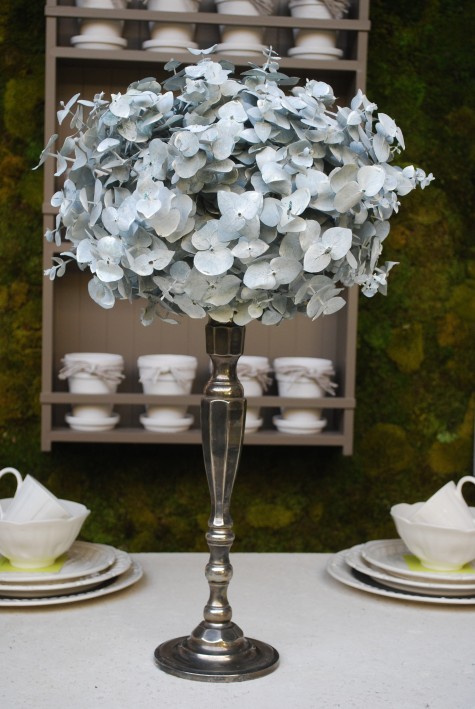 This lone silver plate candlestick I inherited-I do not remember why. For years it has been on a shelf, looking at me. The whitewashed eucalyptus unexpectedly looks good with this formal metal trunk. Every material needs the right spot to shine.
This lone silver plate candlestick I inherited-I do not remember why. For years it has been on a shelf, looking at me. The whitewashed eucalyptus unexpectedly looks good with this formal metal trunk. Every material needs the right spot to shine. Rob will show up from a buying trip with pots in hand-these are actually densely fabricated paper mache. A wispy and dense natural material seemed like it might make a good companion. Though my first choice would be for a topiary plant firmly rooted in the ground, in a landscape, I don’t mind this slight and skillfully made interior bound reference. Making is much about doing justice to whatever greatly interests you.
Rob will show up from a buying trip with pots in hand-these are actually densely fabricated paper mache. A wispy and dense natural material seemed like it might make a good companion. Though my first choice would be for a topiary plant firmly rooted in the ground, in a landscape, I don’t mind this slight and skillfully made interior bound reference. Making is much about doing justice to whatever greatly interests you.